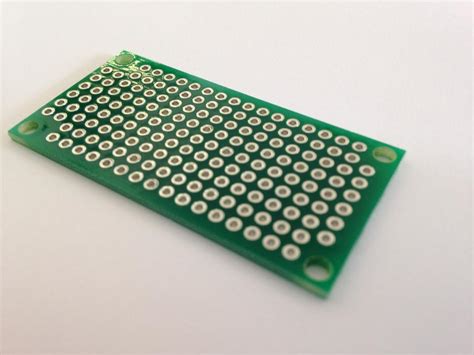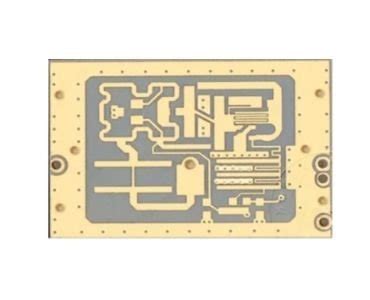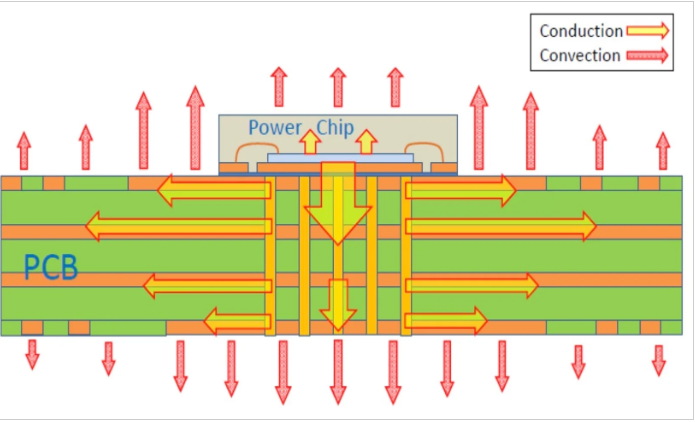Inductive Position Sensors for Industrial and Transportation Markets
As automation increases across industries, motion control becomes increasingly important. To effectively drive motors, control inputs describing speed and position are essential. However, there are multiple technologies that implement this sensing, each with different characteristics and application scenarios.
This article will compare different rotation sensing technologies and discuss why they are selected. We will then take a look at some of the latest devices on the market.
Position Sensing Applications
Position sensing applications are growing rapidly as many previously manual processes are automated to improve accuracy, increase yields, and reduce operating costs. In fact, wherever there is some form of motion, there is a need for a sensor to provide position information to the controller.
Industry 4.0 has driven many advances in automation in the industrial market. The increasing popularity of robotics allows for “unmanned” operation around the clock without fatigue or errors—which requires a sensor for each axis of motion. The same is true for “cobots” that work alongside humans in traditional factories.
Today, many parts are made by machine—some using numerical control (CNC) machines, some using laser cutters, and some using 3D printers. These machines have moving parts that require precise position control to meet quality targets. Once the parts are machined, they are often transported by automated material handling or conveyors, which also requires position sensing.
Position control is also needed outside the factory, for example in large medical devices that move patients or scanners. Robots are now able to perform surgery, which also requires very precise control.
In the transportation sector, every application involves motion. Whether it is traditional vehicles such as trains, agricultural machinery, and construction machinery, or emerging applications such as autonomous mobile robots (AMRs) in warehouses and thousands of drones, position sensing is needed.
As passenger cars of all drive modes (internal combustion engine (ICE), pure electric drive (EV) and hybrid) move towards electrification, mechanical control schemes are being replaced by systems such as “drive-by-wire” and “steer-by-wire”. In order for these systems to work properly, the position of the gas pedal (accelerator) must be transmitted to the electronic control unit (ECU), or the position of the steering wheel must be transmitted to the steering control system.
As electronic control expands to nearly every aspect of vehicle operation, position sensing is also being used in suspension components (for leveling/ride control), powertrains, and power windows, sunroofs, door locks, and more.
Comparison of Position Sensing Technologies
There are three main technologies used for rotary position sensing—optical, magnetic, and inductive—each with different modes of operation, advantages, disadvantages, and applications.
Optical encoders are generally considered the most accurate (although not always) and work by passing light through a perforated disk and detecting motion using pulses of light as the disk rotates.

Figure 1: The main methods for rotary position sensing include optical, magnetic, and inductive technologies
Typically, these devices are used in applications that require extremely high accuracy, such as precision robotics and machine tools such as CNC lathes or laser cutters. While they are accurate and insensitive to magnetic fields, they are susceptible to vibration and dirt on the disk, which can cause them to fail.
Magnetic encoders tend to be less accurate and are used primarily in very cost-sensitive applications. They perform well in the presence of vibration and contamination, but are significantly affected by external magnetic fields, which limits their applicability.
Inductive encoders offer better accuracy than magnetic encoders, can withstand higher levels of vibration and contamination, and are insensitive to magnetic fields. Other advantages include good repeatability, insensitivity to temperature, low component count, small size, and no need for rare earth materials (i.e., magnets).
NCS32100 Dual Inductor Position Sensor
ONSEMI’s NCS32100 dual inductor position sensor achieves excellent non-contact position accuracy of better than +50 arc seconds or 0.0138 degrees of mechanical rotation using two simple and innovative PCB pads. One PCB is attached to the motor stator (stationary portion) while the other single-layer PCB is attached to the rotor or shaft. The two PCBs are placed in parallel, separated by an air gap of 0.1mm to 2.5mm. The NCS32100 is located on the stator PCB.
Thick and thin (dual) conductive traces or coils are printed on both pads. The third conductive trace, called the field coil, is printed on the stator PCB. The NCS32100 sends a 4MHz sine wave to the field coils, which creates an electromagnetic field around the stator field coils. Based on Faraday’s law of mutual inductance, the rotor’s thick and thin trace coils intersect the electromagnetic field, coupling energy into the rotor coils to form eddy currents.
At the same time, the stator’s thick and thin coils are connected to up to eight NCS32100 receiver inputs. As the rotor rotates, the rotor’s eddy currents interfere with the stator receiver coils. The NCS32100 processes these interferences through a proprietary algorithm in its internal DSP (digital signal processor) to measure the rotor position.

Figure 2: Dual-inductor technology provides high performance in a simple solution
Using a 40mm PCB sensor, the NCS32100 can achieve a position accuracy of ±50 arc seconds at 6,000 RPM, and with some sacrifice in accuracy, it can reach speeds up to 45,000 RPM. Higher accuracy within +/- 10 arc seconds can be achieved by using a larger PCB sensor or by accurately aligning the rotor with the stator.
This simple solution requires only a small amount of electronics, ensuring small size and low cost. It is also completely insensitive to temperature fluctuations, contamination and external magnetic fields.
Dual-Inductor Technology Integrated Solution
ON Semiconductor’s NCS32100 supports high-precision rotary position sensors designed for industrial applications and environments. It is an absolute position device that can determine position without motion. The NCS32100 is also capable of calculating speed at speeds up to 45,000 RPM.
At speeds up to 6,000 RPM, the NCS32100 provides full accuracy of ±50 arc seconds, which is comparable to the performance of many optical encoders. The device also integrates an Arm® Cortex® M0+ MCU, provides high configurability and an internal temperature sensor.
The NCS32100’s built-in calibration routine allows the sensor to self-calibrate with a single command, a process that takes only two seconds. It does not require a reference encoder and the routine can be run at any time as long as the rotor speed is between 100 and 1000 RPM. All calibration coefficients are stored in non-volatile memory (NVM).
A typical optical solution requires a total of three PCBs – the optical disc, the stator PCB, and the LED driver PCB, with approximately 100 components required to implement the full functionality.

Figure 3: Dual-inductor technology matches optical technology in accuracy, but with less complexity and cost
In contrast, the NC32100-based solution requires only two PCBs: the rotor is a single-layer PCB without any components, while the stator PCB contains only 12 components.
In automotive applications, while cost and reliability are important, safety is even more critical, especially in applications such as steering or braking. ON Semiconductor’s automotive-grade absolute position sensor NCV77320 is compliant with the ISO26262 standard and is designed specifically for these critical application scenarios. The NCV77320 has a position accuracy of 194.3 arc seconds or 0.0539 degrees of mechanical rotation (depending on PCB geometry), primarily because it has only 3 receiver inputs, while the NCS32100 has 8, and the NCV77320 does not support thick and thin coil PCB configurations. Both the NCV77320 and NCS32100 can operate as either rotary or linear encoders.
Applications for the NCV77320 include brake pedal sensors, accelerator pedal sensors, motor position sensors, brake system sensors, vehicle level sensors, transmission gear sensors, throttle position sensors, and exhaust gas recirculation valve sensors.
Like the NCS32100, the NCV77320 is insensitive to contamination, temperature changes, and magnetic field interference, and can be used in automotive environments with an ambient temperature range of -40ºC to +150ºC.
The NCV77320 can run up to 10,800 RPM and communicates with a companion MCU via SENT, SPI, or analog interfaces.
Summary
With the increasing popularity of automation, there is a growing need for position sensing of rotating motors. There are a variety of technologies available to achieve this function, including optical, magnetic, and inductive. Optical technology is highly accurate but expensive and susceptible to contamination. Magnetic technology is low cost but susceptible to magnetic field interference.
Inductive technology is gaining popularity, and with the advent of dual inductive sensors, it is now possible to create sensors that have optical-grade accuracy but are more cost-effective.







